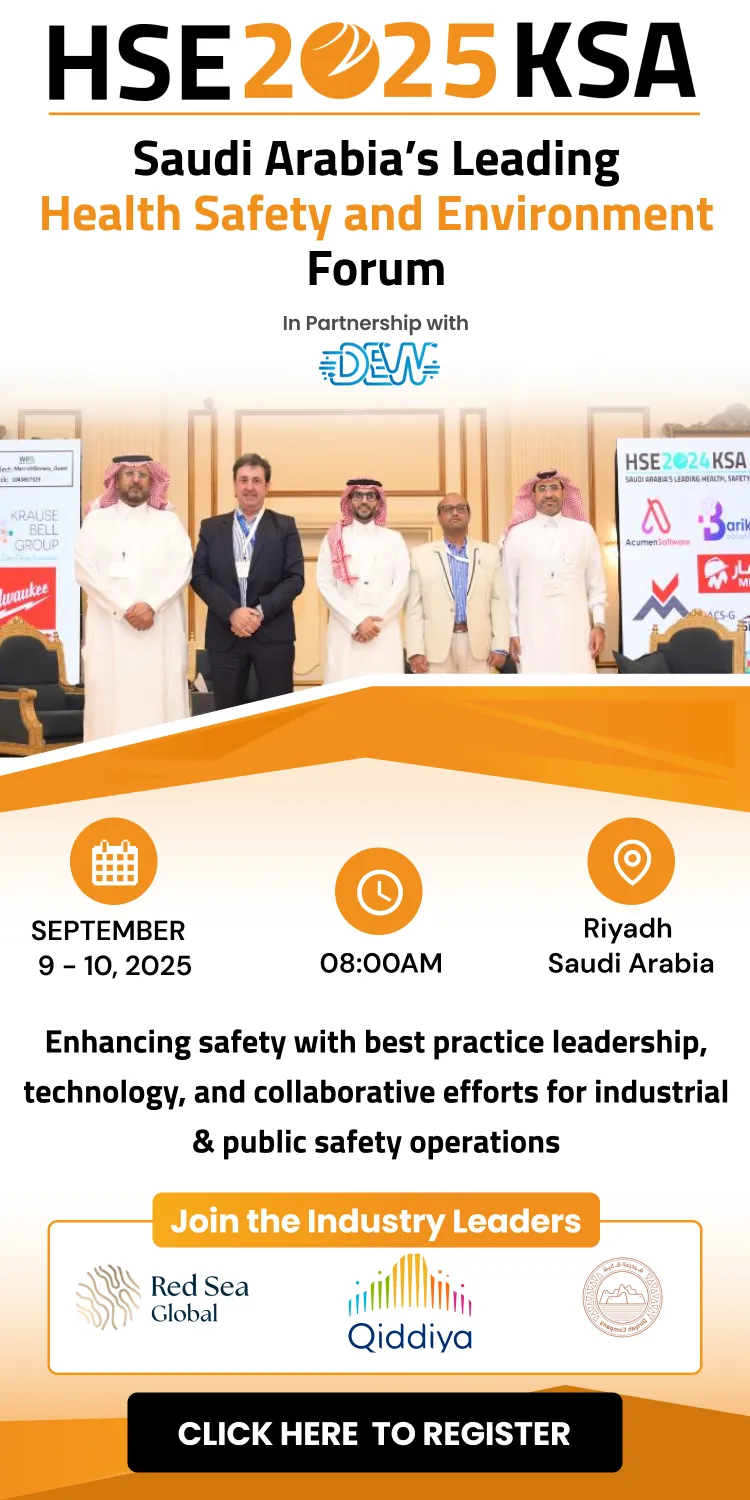Farah Montenegro, Brady Solutions, discusses how operators can navigate the shifting HSE landscape
How is the HSE landscape shifting with rising regulation and project diversification?
The HSE landscape is experiencing significant changes due to rising regulations and project diversification. Here are some ways in which it is shifting:
1. Increased regulations: Governments and regulatory bodies are imposing stricter regulations and standards to ensure the safety of workers and the protection of the environment. This includes occupational health and safety regulations, environmental protection, and hazardous materials handling. The HSE landscape is evolving to accommodate and comply with these new regulations.
2. Compliance focus: As regulations become more stringent, organisations are increasingly emphasising compliance with HSE requirements. They are adopting proactive approaches by investing in HSE management systems, conducting regular audits, and implementing compliance monitoring systems with a greater focus on risk management, reporting, and accountability.
3. Greater project diversification: With rising project diversification, HSE considerations need to adapt to new challenges. This includes factors such as different project scales, complex supply chains, and the incorporation of new technologies. The HSE landscape is evolving to incorporate specialized approaches based on project-specific requirements. For instance, HSE management on construction projects may differ from those in the manufacturing or energy sectors.
4. Integrated approach: Organisations are adopting a more integrated approach to HSE management to address the changing landscape. This involves incorporating HSE considerations early in project planning and design stages to minimise risks, enhance efficiency, and reduce costs. An integrated approach also fosters collaboration between HSE professionals, project managers, and stakeholders, ensuring that HSE becomes integral to project execution and decision-making processes.
5. Technology adoption: Advancements in technology are transforming the HSE landscape. Organisations leverage technologies such as artificial intelligence, machine learning, data analytics, and digital platforms to enhance HSE performance. This includes real-time monitoring systems, predictive analytics for identifying risks, virtual training, and augmented reality for safety simulations. These technologies facilitate proactive HSE management, enable efficient data collection, analysis, and reporting, and empower organisations to make data-driven decisions.
Overall, the HSE landscape is shifting to accommodate rising regulation and project diversification. Organisations need to adapt to these changes by adopting proactive, integrated, and technology-driven approaches to ensure the well-being of their workers, protect the environment, and maintain compliance with evolving regulations.
How should operators approach the changing landscape?
Operators should approach the changing landscape by adapting and embracing new technologies and methodologies. Here are some suggestions on how operators can navigate the changing landscape:
1. Stay informed: Operators should constantly stay updated with industry trends, technologies, and market shifts. This can be done by actively seeking knowledge through research, attending industry conferences, participating in webinars, and joining professional networks.
2. Embrace new technologies: With the rapid technological advancements, operators should be open to adopting new tools and platforms to enhance their operations. This may include utilising automation, artificial intelligence, and machine learning to streamline processes and improve customer experiences.
3. Focus on customer-centricity: As the landscape changes, operators should prioritise their customers' needs and preferences. Understanding customers' expectations and adapting operations accordingly will help operators stay relevant and competitive.
4. Encourage a culture of innovation: Operators should champion a culture of innovation within their organisation. This can be accomplished by supporting employees to suggest new ideas, implementing agile workflows, and allocating resources for experimentation, research, and development.
5. Collaborate and network: Operators should actively seek collaborations and partnerships with other organisations in the industry. Collaborating with complementary businesses can provide opportunities for growth, shared resources, and knowledge exchange.
6. Invest in employee development: Operators should invest in continuous employee training and development programmes in a changing landscape. This helps ensure the workforce has the necessary skills and knowledge to adapt to new challenges and opportunities.
7. Remain adaptable: Operators should be flexible and adaptable to change. This includes being open to new strategies, adapting to new business models if needed, and embracing agile methodologies to respond quickly to market demands.
By adopting these approaches, operators can position themselves for success in the changing landscape.
What benefits do all-encompassing solutions such as SafeTrak and Brady Workstation offer operators?
Too many workplace accidents are still caused by using equipment that is not fit for use. These accidents can have grave consequences. Imagine a scaffold collapsing: co-workers and passers-by might be seriously injured, with a colossal impact on themselves, their families, and your business. Think about what happens when your fire extinguishers do nothing when they should when valves suddenly break down, or when the reverse warning indicator on a forklift does not work.
All-encompassing solutions like SafeTrak and Brady Workstation offer several potential benefits to operators.
Safetrak benefits – You can plan equipment inspections and easily streamline planning and tasks. Digital equipment inspections offer a number of advantages:
• Easy inspection planning complete with automated reminder emails
• Accurate, standardised, customisable equipment inspections.
• Complete inspections on the job and immediately upload the complete template.
• Auto-generate reports in one click, including the latest inspection data.
• Receive complete, auto-generated reports and audit trails at regular intervals via email.
Brady Workstation benefits – BWS offers professional, intuitive apps to design quality product labels, cable labels, and safety signs. Thanks to centralised updates, label design becomes easier, faster, and quickly adaptable to new label norms.
BWS increases productivity by providing intuitive features, automation, an image library, and templates; it enables operators to create label and sign identification quicker and fully compliant with international regulations in industries where compliance is crucial.
In summary, solutions such as Safetrak and Brady Workstation offer operators benefits such as improved efficiency, compliance, comprehensive data visibility, and cost savings. These benefits contribute to improving overall operational performance and driving business success.
Across a full project lifecycle, how can Brady Solutions help regulate and future-proof the safety process?
Brady Solutions can be crucial in regulating and future-proofing the safety process throughout the project lifecycle. Here are some ways in which Brady Solutions can help:
1. Comprehensive Risk Assessment: Brady Solutions can assist in conducting thorough risk assessments at the beginning of a project. This involves identifying potential hazards, evaluating their likelihood and impact, and implementing appropriate control measures.
2. Safety Documentation: Brady Solutions can provide tools and templates for creating safety documentation, including safety plans, procedures, and guidelines. These documents help ensure that safety requirements are well-documented and communicated clearly throughout the project.
3. Training and Education: Brady Solutions can offer training programmes and resources to educate project teams on safety best practices. This helps build a safety culture within the organisation and ensures all team members know about relevant safety procedures.
4. Continuous Monitoring and Improvement: Brady Solutions can continuously implement systems to monitor safety performance throughout the project lifecycle. This includes regular inspections and audits. By identifying and addressing gaps in safety performance, Brady Solutions can help improve overall safety outcomes.
5. Technology Integration: Brady Solutions can integrate digital platforms and technologies to streamline safety processes. This may include implementing safety management software, IoT devices for real-time monitoring, or data analytics tools to identify potential safety risks and trends.
6. Future-Proofing: Brady Solutions can stay up-to-date with emerging safety trends, regulations, and technologies. By continuously monitoring and adapting to changes in the industry, Brady Solutions can help future-proof the safety process, ensuring that the project remains compliant and safe even as new challenges arise.
Ultimately, Brady Solutions can provide a comprehensive approach to regulating and future-proofing the safety process across the entire project lifecycle. By leveraging technology, expertise, and industry knowledge, Brady Solutions can support organisations in ensuring that safety remains a top priority th
For further information on Brady solutions, see www.hsereview.com/bradys-offshore-safety-and-efficiency-solutions






